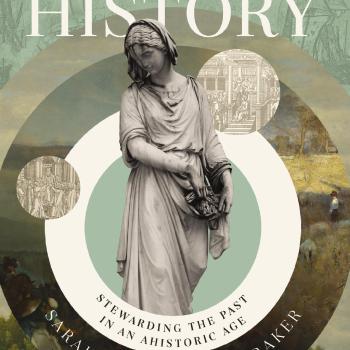Baptismal Imagery in Early Christianity: Ritual, Visual, and Theological Dimensions. By Robin M. Jensen. Grand Rapids, MI: Baker Academic, 2012.
Teaching at a theological seminary, I find the breadth of each class challenging, something I have written about here and here. At the same time, it helps me to develop an eye for larger patterns of development in history. Further, it affords me an excuse for reading across the breadth of the history of Christianity. Instead of feeling guilty about reading books that do not contribute to my research, I can feel confident that such excursions sharpen my ability to teach Church History I and Church History II. As a result, I keep several books on my reading list (really a stack of books on my desk) whose sole purpose is to strengthen my lectures for those classes.
Last year, I ordered several books in that category. One of the books was Robin M. Jensen’s Baptismal Imagery in Early Christianity: Ritual, Visual, and Theological Dimensions (Baker Academic, 2012). As is often the case, the book sat on my desk for several months before I had a chance to read it. Recently, in preparing a new lecture entitled, “Life in the Early Christian Community,” I turned to Jensen’s book to expand my understanding of baptism in the first few centuries of the Christian Era. Although I merely intended to cull information for a portion of a lecture, the book drew me into its pages. Jensen’s knowledge of texts, art, architecture and liturgy manifested themselves in a finished product with superior organization and highly-readable prose. As a result, reading Baptismal Imagery was a pleasure.
Focusing on the first five centuries of the church, Jensen does not “try to reconstruct the details of actual baptismal practices” but focuses on the meaning of baptism “for those who received and administered the ritual (3).” Drawing on catechetical lectures and other writings of early Christian writers, Jensen finds that typological interpretation dominated the early Christian understanding of baptism. Stories drawn from the Old Testament narrative or the life of Jesus provided a pattern replicated in baptism. In baptism, the fulfillment of the promise anticipated in that pattern becomes a reality for the recipient of the rite.
Overall, Jensen discerns “five core motifs (4)” that encapsulate the early Christian understanding of baptism. First, baptism cleansed from sin and sickness, “washing away external impurities and internal ones (50).” Second, baptism symbolized entrance into the community of saints, the church. In baptism, Christians became part of an “exclusive group that functioned like a family and provided them with spiritual nurture and support (90).” Third, baptism conveyed the gift of the Spirit and his illuminating and sanctifying roles. Fourth, in being baptized, the new Christian experienced death (to self) and rebirth. Finally, baptism proclaimed the eschatological hope for restoration in the new creation.
In each case, not merely text, but also art, architecture, and ritual confirms these understandings of baptism. For example, artistic representations of Jesus healing the paralytic appear in the art surrounding some baptismal fonts, reinforcing the motif of baptism as cleansing from sickness (28-30). Similarly, the shape of many baptistries reinforced the fifth motif. Those shaped like a cross or tomb represented death to self, while those shaped as a womb, emphasized the new birth. Ritually, such practices like anointing the newly baptized believer with oil buttressed the third motif’s emphasis on the reception of the Holy Spirit.
Throughout the volume, Jensen deftly employs her knowledge of art, architecture, and ritual to reinforce the understanding of baptism presented in the primary source texts. In so doing, she persuasively presents her case that in the early church, exegesis, theological interpretation, artistic representation and ritual symbolism all worked together to convey meaning.
In contemporary American evangelicalism, pragmatic concerns most often dictate church practice and pragmatic-minded church practitioners concern themselves little with the symbolism conveyed by such practices. In Baptismal Imagery in Early Christianity, Robin Jensen demonstrates that early Christian leaders took a different approach, understanding that Scripture, theology, and (ritual) practice all worked together to convey meaning in church life. In light of the level of commitment that many of the early Christians demonstrated, perhaps we should consider their perspective more carefully.
















